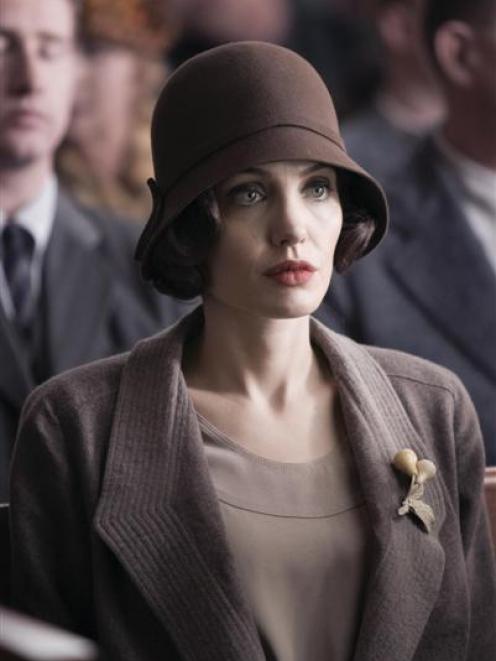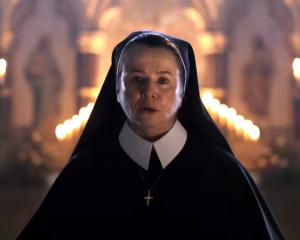
But the Walter Collins case would end up becoming the O. J. Simpson drama of its day, a horrifying crime that inspired a media frenzy and captivated Southern California.
What started as the real-life tale of a missing child would take on a much larger significance in the then-burgeoning city.
Although the details might have faded, its commentary on corruption and abuse of authority, on female empowerment and on the ultimate price of justice, continues to echo throughout the canyons of LA's collective memory.
In the middle of it all was Christine Collins, Walter's mother, a victim turned unlikely heroine.
On March 10, 1928, Collins gave 9-year-old Walter a dime to see a movie. Collins, who lived in a middle-class neighbourhood north of downtown LA, was an anomaly for an era when women were considered to suffer from the vapours.
A handsome woman with prominent features, she was a single mother whose ex-husband was in jail for helping to run a speak-easy.
She was also a professional woman who worked at the telephone company and apparently prided herself on maintaining a non-emotional, businesslike manner when dealing with men in authority.
Walter disappeared that day, a fact that was chronicled in the Los Angeles Times several days later. Within weeks, the police (with the media watching) were conducting a massive manhunt and dragging a local lake for Walter's body.
Tips poured in, with people claiming to have seen the boy in a nearby petrol station, sitting in the back seat of a car, wrapped in newspaper - and even as far away as San Francisco.
The boy's father, Walter J. S. Collins, floated the theory that some of his former inmates kidnapped his son, perhaps out of revenge.
In August, the LA Police Department delivered a boy to Christine Collins, her putative son who had been found in Illinois.
It was an apparent coup for the police department, which routinely had suffered bad press and whose chief, James Davis, was famous (now infamous) for having created only two years before a 50-man "gun squad" to go after the city's criminal element with the express command to bring in the purported crooks "dead, not alive."
Upon seeing the proffered child, Collins, according to an account from that time, stated, "I do not think that is my son." But, pressured by the police, she took the boy home.
Three weeks later, she returned the child to the police, armed with dental records of her actual son and statements from people who knew Walter.
Collins unwittingly initiated what would become a veritable media storm, which ended with a court fight that lasted a decade, and a new state law, but never definitively resolved - at least for Collins - what happened to Walter.
Now her story is being told in the new Clint Eastwood film, Changeling. (It follows the true story, so if you're worried about plot spoilers, think twice before reading further.)
The title comes from European folklore; a "changeling" was the offspring of a fairy or troll secretly swapped for a human child.
The film stars Angelina Jolie as Collins and John Malkovich as the Rev Gustav Briegleb, a pastor with a radio pulpit who took up Collins' cause.
The Collins story was unearthed from city and court archives by journalist turned screenwriter J. Michael Straczynski.
"I was so caught up by the raw, naked courage she showed, that she fought so hard for her son, and nobody remembered this. It was outrageous," Straczynski says.
So many of Collins' travails, he said, stem from the fact that she was a woman who didn't conform to what men - in this case the LA police - expected her to be like.
Collins was treated brutally by the police. When she tried to give back the child, the captain in charge of the case, J. J. Jones, ridiculed her.
According to court testimony, he told her, "What are you trying to do, make fools out of us all? Or are you trying to shirk your duty as a mother and have the state provide for your son? You are the most cruel-hearted woman I've ever known."
Collins testified that Jones told her, "You're insane and ought to be in a madhouse. You're under arrest and I'm going to send you to the psychopathic ward."
Jones threw Collins in the psychiatric ward of the Los Angeles County General Hospital - that is, the insane asylum - where she remained for about a week.
Meanwhile, under police questioning, the child who had been returned to Collins admitted that he was actually Arthur Hutchins, a 12-year-old runaway from Illinois who had pretended to be Walter because he wanted to go to Los Angeles and see cowboy star Tom Mix.
Around this time, the police also inadvertently discovered a serial killer, Gordon Stewart Northcott, operating from a rundown chicken farm in Wineville, a small community east of LA about halfway to the desert.
Northcott preyed on young boys, sexually abusing and ultimately killing an unknown number of them. Estimates run as high as 20.
Northcott's nephew, Sanford Clark, who had been coerced into being his accomplice, finally alerted the police to the atrocities. Clark said one of the victims was Walter Collins.
Christine Collins sued the city, Davis and Jones for false imprisonment, and 1000 furious citizens attended a hearing about the Collins case before the city council's health and welfare committee.
Giant speakers had to be hung from the outside of city hall to accommodate the overflow crowds.
Undoubtedly, the public's fascination was stoked by the radio preacher Briegleb, who loved to rail not only against police corruption, but also other salacious topics of the day.
"Everybody around her had an agenda. The police had an agenda. Briegleb had an agenda," Straczynski says.
"The only clear voice in the entire thing was her voice saying, `Where is my son?'."
Eastwood found the real Northcott ranch still in existence. "It was creepy," says the veteran director-actor, who had been taken there by a historian from the Riverside Historical Society.
"It looks exactly the same, though the house has been slightly modified. We went around back and there were these chicken coops."
The coops are where Northcott kept and murdered his victims. "I don't know if they were the same ones, but they were old, very rustic chicken coops," Eastwood said.
No-one appeared to be home, but Eastwood decided not to knock on the door. He didn't know how the occupants would feel about having Clint Eastwood show up on their doorstep and announce they lived in the former home of a notorious child killer.
"I didn't want to intrude on these people's life," he says.
Once it was shown that the boy returned to her was not her son, Collins improbably waged war on the Establishment. The Police Commission held a hearing but refused to discipline Jones.
Later, however, the City Council's health and welfare committee recommended the removal of both Jones and Chief Davis.
After two trials, a judge eventually ordered Jones to pay Collins $US10,800, but he never did.
He and Davis were eventually reinstated to the police department, with Davis becoming chief again in 1933.
More important, in the wake of Collins' incarceration, the California Legislature passed a Bill that prohibited the police from putting a person into a psychiatric facility without a warrant.
Despite suspicions about Northcott ranch, Christine Collins maintained hope that her son was alive throughout her life, and continued to search for him.












